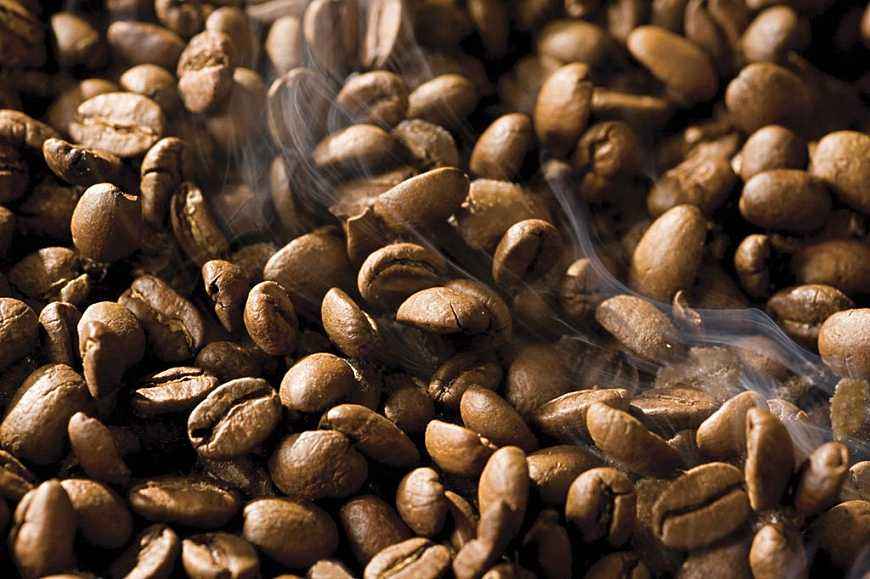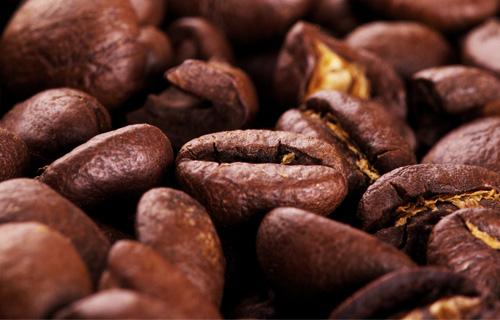The name for Robusta coffee.
Follow the caf é (Wechat official account vdailycom) and found that Beautiful Cafe opened a small shop of its own.
Robusta comes from a mutant of the Congo species (scientific name: Coffee Canephora), with a global output of about 25% to 35%, producing as large as Vietnam, Africa, Indonesia, India, Uganda and other places.
I remember that a few years ago, the American Coffee quality Accreditation Association (Coffee Quality Institute, CQI) began to build a graded cup test certification system for the quality of robusta coffee, R Grader Certificate, so Robusta also began to have its own quality and its own cup test form.
Although I have been promoting boutique coffee, I have never given up on Robusta. Many well-known coffee roasters or cafes in many countries, such as Italy, Australia, Europe, the United States and so on, still use Robusta to mix formula beans to improve flavor or reduce costs.

I always wonder why these famous boutique cafes are still used for cost or flavor.
If in terms of cost, unless you use more than 50% or 100%, a formula of about 15% or 20% will not save you much cost, except if you bake several tons a year.
As for the improvement of flavor, Robusta can increase the complexity of coffee and reduce the sour taste, but the poor quality of Robusta can increase this change and increase a lot of negative flavor.
But why? Why do those bakers insist on joining Robusta?
If?
What if Robusta also has a good flavor?
Interestingly, a raw bean merchant friend brought a Robusta with R Grader ranking No. 2 in the world. Of course, curiosity came to me. Asked the price is 3-4 times of the general Robusta price, but still introduced, in the baking process of dehydration and drying process is not that bad potion leather smell but a touch of grass smell, the bean point is about close to the second explosion before the bean.
R03
In the cup test, I used the hand flushing method, 18 grams against 300 grams of water, freshly ground coffee powder other I do not like, because the flavor of Quaker. . Originally wanted to say that maybe I was looking forward to it too much, when I started to taste ~ when I was in the mouth! The acid is much lower than the first grade acid in Q certification, and I was surprised by the cleanliness of the taste. The sweetness is obvious with nuts, cashews, cream and a hint of chocolate, but the flavor is a bit monotonous without acid.
To me, this article is not a tribute to Robusta, but in the world of coffee, many things are not absolute, and there are a lot of undiscovered things waiting for us to discover it.
I remember that a few years ago, the American Coffee quality Accreditation Association (Coffee Quality Institute, CQI) began to build a graded cup test certification system for the quality of robusta coffee, R Grader Certificate, so Robusta also began to have its own quality and its own cup test form.
Although I have been promoting boutique coffee, I have never given up on Robusta. Many well-known coffee roasters or cafes in many countries, such as Italy, Australia, Europe, the United States and so on, still use Robusta to mix formula beans to improve flavor or reduce costs.
I always wonder why these famous boutique cafes are still used for cost or flavor.
If in terms of cost, unless you use more than 50% or 100%, a formula of about 15% or 20% will not save you much cost, except if you bake several tons a year.
As for the improvement of flavor, Robusta can increase the complexity of coffee and reduce the sour taste, but the poor quality of Robusta can increase this change and increase a lot of negative flavor.
But why? Why do those bakers insist on joining Robusta?
If?
What if Robusta also has a good flavor?
Interestingly, a raw bean merchant friend brought a Robusta with R Grader ranking No. 2 in the world. Of course, curiosity came to me. Asked the price is 3-4 times of the general Robusta price, but still introduced, in the baking process of dehydration and drying process is not that bad potion leather smell but a touch of grass smell, the bean point is about close to the second explosion before the bean.
R03
In the cup test, I used the hand flushing method, 18 grams against 300 grams of water, freshly ground coffee powder other I do not like, because the flavor of Quaker. . Originally wanted to say that maybe I was looking forward to it too much, when I started to taste ~ when I was in the mouth! The acid is much lower than the first grade acid in Q certification, and I was surprised by the cleanliness of the taste. The sweetness is obvious with nuts, cashews, cream and a hint of chocolate, but the flavor is a bit monotonous without acid.
To me, this article is not a tribute to Robusta, but in the world of coffee, many things are not absolute, and there are a lot of undiscovered things waiting for us to discover it.
Robusta comes from a mutant of the Congo species (scientific name: Coffee Canephora), with a global output of about 25% to 35%, producing as large as Vietnam, Africa, Indonesia, India, Uganda and other places.
I remember that a few years ago, the American Coffee quality Accreditation Association (Coffee Quality Institute, CQI) began to build a graded cup test certification system for the quality of robusta coffee, R Grader Certificate, so Robusta also began to have its own quality and its own cup test form.
Although I have been promoting boutique coffee, I have never given up on Robusta. Many well-known coffee roasters or cafes in many countries, such as Italy, Australia, Europe, the United States and so on, still use Robusta to mix formula beans to improve flavor or reduce costs.
I always wonder why these famous boutique cafes are still used for cost or flavor.
If in terms of cost, unless you use more than 50% or 100%, a formula of about 15% or 20% will not save you much cost, except if you bake several tons a year.
As for the improvement of flavor, Robusta can increase the complexity of coffee and reduce the sour taste, but the poor quality of Robusta can increase this change and increase a lot of negative flavor.
But why? Why do those bakers insist on joining Robusta?
If?
What if Robusta also has a good flavor?
Interestingly, a raw bean merchant friend brought a Robusta with R Grader ranking No. 2 in the world. Of course, curiosity came to me. Asked the price is 3-4 times of the general Robusta price, but still introduced, in the baking process of dehydration and drying process is not that bad potion leather smell but a touch of grass smell, the bean point is about close to the second explosion before the bean.
R03
In the cup test, I used the hand flushing method, 18 grams against 300 grams of water, freshly ground coffee powder other I do not like, because the flavor of Quaker. . Originally wanted to say that maybe I was looking forward to it too much, when I started to taste ~ when I was in the mouth! The acid is much lower than the first grade acid in Q certification, and I was surprised by the cleanliness of the taste. The sweetness is obvious with nuts, cashews, cream and a hint of chocolate, but the flavor is a bit monotonous without acid.
To me, this article is not a tribute to Robusta, but in the world of coffee, many things are not absolute, and there are a lot of undiscovered things waiting for us to discover it.
Important Notice :
前街咖啡 FrontStreet Coffee has moved to new addredd:
FrontStreet Coffee Address: 315,Donghua East Road,GuangZhou
Tel:020 38364473
- Prev

Are Robusta and Robasta the same kind of beans?
Following Cafe Review (official Wechat account vdailycom) found that Beautiful Cafe opened a small shop of its own Robusta and Robasta is a kind of beans 1, which is actually a branch of Cannifera 2, but now it can be said that the two names are just different translations of "Robusta" coffee commonly known as "sturdy beans", low elevations (200 to 800kms).
- Next

Brief introduction of Robusta Arabica Coffee
Following Cafe (official Wechat account vdailycom) found that Beautiful Cafe opened a small shop of its own. Botanically speaking, coffee beans are divided into Arabica and Robusta. [Arabica] the cultivation conditions are relatively strict, requiring a high altitude of more than 6-2000 meters, fertile soil fertility, sufficient moisture, proper sunshine conditions and shade in order to grow high quality.
Related
- Detailed explanation of Jadeite planting Land in Panamanian Jadeite Manor introduction to the grading system of Jadeite competitive bidding, Red bid, Green bid and Rose Summer
- Story of Coffee planting in Brenka region of Costa Rica Stonehenge Manor anaerobic heavy honey treatment of flavor mouth
- What's on the barrel of Blue Mountain Coffee beans?
- Can American coffee also pull flowers? How to use hot American style to pull out a good-looking pattern?
- Can you make a cold extract with coffee beans? What is the right proportion for cold-extracted coffee formula?
- Indonesian PWN Gold Mandrine Coffee Origin Features Flavor How to Chong? Mandolin coffee is American.
- A brief introduction to the flavor characteristics of Brazilian yellow bourbon coffee beans
- What is the effect of different water quality on the flavor of cold-extracted coffee? What kind of water is best for brewing coffee?
- Why do you think of Rose Summer whenever you mention Panamanian coffee?
- Introduction to the characteristics of authentic blue mountain coffee bean producing areas? What is the CIB Coffee Authority in Jamaica?

